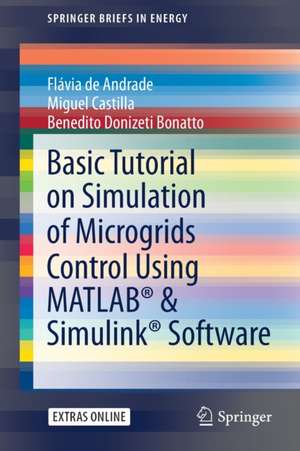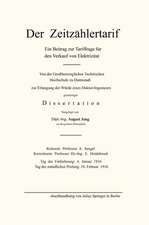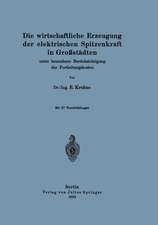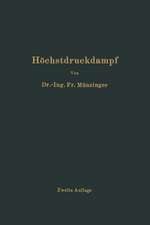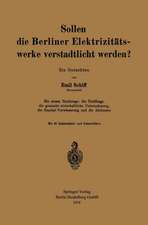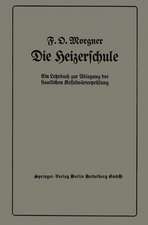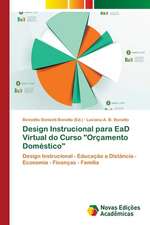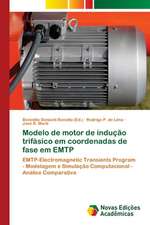Basic Tutorial on Simulation of Microgrids Control Using MATLAB® & Simulink® Software: SpringerBriefs in Energy
Autor Flávia de Andrade, Miguel Castilla, Benedito Donizeti Bonattoen Limba Engleză Paperback – 4 mar 2020
The content is organised didactically, with a level of mathematical and scientific rigour suitable for undergraduate and graduate programmes, as well as for industry professionals. The use of MATLAB® Simulink® software facilitates the learning process with regard to modelling and simulating power electronic converters at the interface of distributed energy resource (DER) systems. The book also features a wealth of illustrations, schematics, and simulation results.
Given its scope, it will greatly benefit undergraduate and graduate students in the fields of electrical and electronics engineering, as well as professionals working in microgrid design and implementation.
Din seria SpringerBriefs in Energy
-
 Preț: 345.89 lei
Preț: 345.89 lei -
 Preț: 345.89 lei
Preț: 345.89 lei -
 Preț: 376.04 lei
Preț: 376.04 lei -
 Preț: 377.35 lei
Preț: 377.35 lei -
 Preț: 476.42 lei
Preț: 476.42 lei -
 Preț: 343.36 lei
Preț: 343.36 lei -
 Preț: 374.85 lei
Preț: 374.85 lei -
 Preț: 376.59 lei
Preț: 376.59 lei -
 Preț: 477.72 lei
Preț: 477.72 lei -
 Preț: 176.35 lei
Preț: 176.35 lei -
 Preț: 380.07 lei
Preț: 380.07 lei -
 Preț: 376.22 lei
Preț: 376.22 lei -
 Preț: 377.95 lei
Preț: 377.95 lei -
 Preț: 376.43 lei
Preț: 376.43 lei -
 Preț: 377.73 lei
Preț: 377.73 lei -
 Preț: 343.00 lei
Preț: 343.00 lei -
 Preț: 377.35 lei
Preț: 377.35 lei -
 Preț: 377.95 lei
Preț: 377.95 lei -
 Preț: 444.35 lei
Preț: 444.35 lei -
 Preț: 348.84 lei
Preț: 348.84 lei -
 Preț: 412.30 lei
Preț: 412.30 lei -
 Preț: 377.73 lei
Preț: 377.73 lei -
 Preț: 375.62 lei
Preț: 375.62 lei -
 Preț: 380.07 lei
Preț: 380.07 lei -
 Preț: 376.80 lei
Preț: 376.80 lei -
 Preț: 376.22 lei
Preț: 376.22 lei -
 Preț: 479.67 lei
Preț: 479.67 lei - 15%
 Preț: 463.85 lei
Preț: 463.85 lei -
 Preț: 476.79 lei
Preț: 476.79 lei -
 Preț: 375.23 lei
Preț: 375.23 lei -
 Preț: 379.09 lei
Preț: 379.09 lei -
 Preț: 376.22 lei
Preț: 376.22 lei -
 Preț: 409.43 lei
Preț: 409.43 lei - 15%
 Preț: 462.38 lei
Preț: 462.38 lei -
 Preț: 414.21 lei
Preț: 414.21 lei -
 Preț: 375.62 lei
Preț: 375.62 lei -
 Preț: 374.30 lei
Preț: 374.30 lei -
 Preț: 376.22 lei
Preț: 376.22 lei - 15%
 Preț: 463.35 lei
Preț: 463.35 lei -
 Preț: 381.72 lei
Preț: 381.72 lei -
 Preț: 379.09 lei
Preț: 379.09 lei -
 Preț: 375.62 lei
Preț: 375.62 lei - 15%
 Preț: 463.35 lei
Preț: 463.35 lei -
 Preț: 376.80 lei
Preț: 376.80 lei -
 Preț: 374.46 lei
Preț: 374.46 lei -
 Preț: 477.56 lei
Preț: 477.56 lei -
 Preț: 379.48 lei
Preț: 379.48 lei -
 Preț: 374.30 lei
Preț: 374.30 lei -
 Preț: 479.47 lei
Preț: 479.47 lei -
 Preț: 378.12 lei
Preț: 378.12 lei
Preț: 441.63 lei
Nou
Puncte Express: 662
Preț estimativ în valută:
84.51€ • 90.37$ • 70.46£
84.51€ • 90.37$ • 70.46£
Carte tipărită la comandă
Livrare economică 17 aprilie-01 mai
Preluare comenzi: 021 569.72.76
Specificații
ISBN-13: 9783030430122
ISBN-10: 303043012X
Pagini: 55
Ilustrații: XIII, 55 p. 60 illus., 59 illus. in color. With online files/update.
Dimensiuni: 155 x 235 mm
Greutate: 0.11 kg
Ediția:1st ed. 2020
Editura: Springer International Publishing
Colecția Springer
Seria SpringerBriefs in Energy
Locul publicării:Cham, Switzerland
ISBN-10: 303043012X
Pagini: 55
Ilustrații: XIII, 55 p. 60 illus., 59 illus. in color. With online files/update.
Dimensiuni: 155 x 235 mm
Greutate: 0.11 kg
Ediția:1st ed. 2020
Editura: Springer International Publishing
Colecția Springer
Seria SpringerBriefs in Energy
Locul publicării:Cham, Switzerland
Cuprins
Introduction.- Operation Modes of a Microgrid.- Control Methods of Microgrids.- Case Studies: Modeling and Simulation.- Conclusion.
Notă biografică
Flávia de Andrade received his Bachelor’s degree from the Technological Federal University of Parana in 2016, and is currently studying for his M.Sc. at Heriot-Watt University. He has professional experience as an energy efficiency engineer at MGD Eficiência Energética and Vitalux Projetos Sustentáveis and has been a research intern at the Polytechnic University of Catalonia. He has completed other academic and professional qualifications, including a Green Building and Sustainable Design Certificate from the University of California.
Professor Miguel Castilla received his Ph.D. from the Technical University of Catalonia in 1998. He subsequently held a number of teaching positions at the same institution and is now a Full Professor at the Department of Electronic Engineering. He has authored or co-authored more than 80 journal articles and over 130 conference papers. He has been a member of numerous committees and journal boards and is currently an Editor of the journal IET Power Electronics and a member of the external advisory board for the Smart Cities Research Center. Benedito Donizeti Bonatto received his M.Sc. from UNICAMP and his Ph.D. from the University of British Columbia (UBC) in 1995 and 2001, respectively. He subsequently worked in engineering and Research and Development roles within the electricity sector. Since 2007, he has been an Associate Professor at UNIFEI – Federal University of Itajuba. He has also been a Visiting Associate Professor at the Department of Electrical and Computer Engineering, UBC, and is currently visiting at Escola Politècnica Superior d'Enginyeria de Vilanova i la Geltrú. He has published more than 100 technical papers in national and international conference proceedings, and has authored one book and one book chapter.
Professor Miguel Castilla received his Ph.D. from the Technical University of Catalonia in 1998. He subsequently held a number of teaching positions at the same institution and is now a Full Professor at the Department of Electronic Engineering. He has authored or co-authored more than 80 journal articles and over 130 conference papers. He has been a member of numerous committees and journal boards and is currently an Editor of the journal IET Power Electronics and a member of the external advisory board for the Smart Cities Research Center. Benedito Donizeti Bonatto received his M.Sc. from UNICAMP and his Ph.D. from the University of British Columbia (UBC) in 1995 and 2001, respectively. He subsequently worked in engineering and Research and Development roles within the electricity sector. Since 2007, he has been an Associate Professor at UNIFEI – Federal University of Itajuba. He has also been a Visiting Associate Professor at the Department of Electrical and Computer Engineering, UBC, and is currently visiting at Escola Politècnica Superior d'Enginyeria de Vilanova i la Geltrú. He has published more than 100 technical papers in national and international conference proceedings, and has authored one book and one book chapter.
Caracteristici
Offers a thorough introduction to the fundamentals of modelling and simulating convertor controls Utilises MATLAB® Simulink® software to facilitate the learning process and provide practical examples Discusses the advantages and limitations of various control methods and configurations, including droop control
